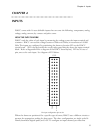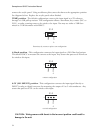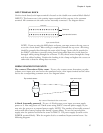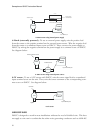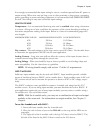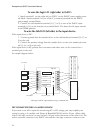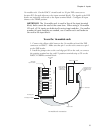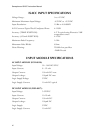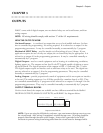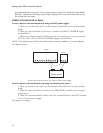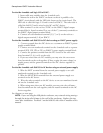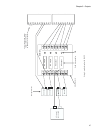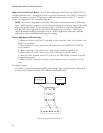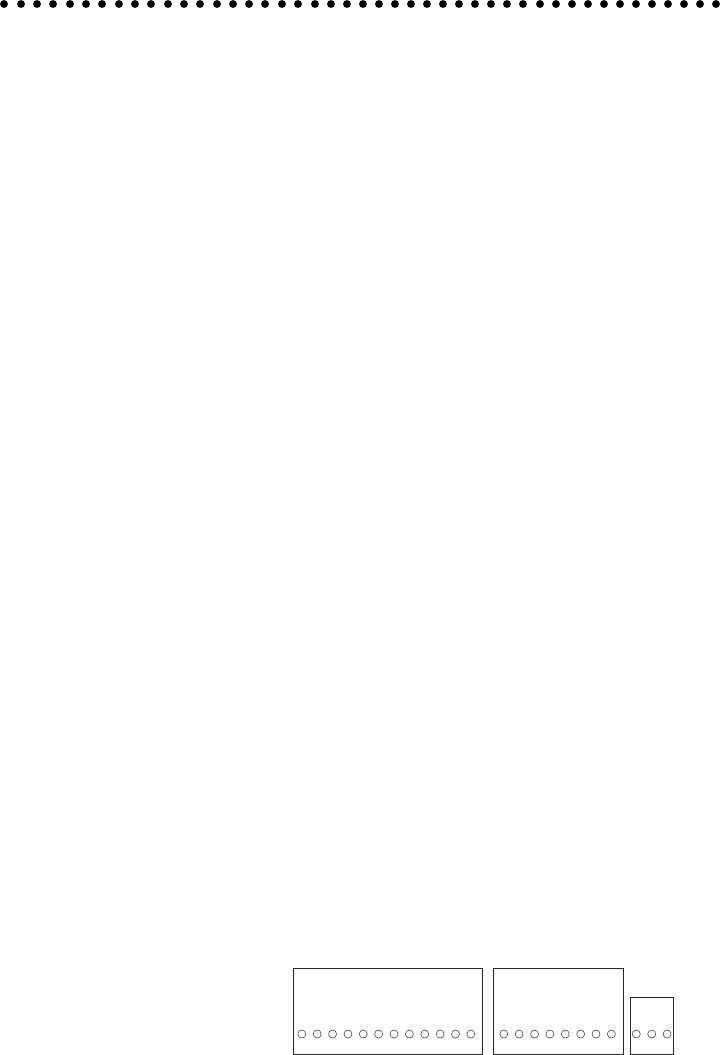
41
Chapter 5: Outputs
CHAPTER 5
OUTPUTS
ISACC comes with 8 digital outputs, one mechanical relay, one on-board buzzer, and four
analog outputs.
NOTE: All wiring should comply with section 17 of the UL requirements.
HOW THE OUTPUTS WORK
On-board buzzer - is considered an output that acts as a local audible indicator. Its func-
tion is controlled by programming. No wiring required. It is referred to as output 9 in the
programming parameters. It may be controlled manually, or automatically by C program.
Mechanical SPDT Relay - used for simple on/off switching of up to 5 Amps. If your
application requires the use of only one output, the on-board relay may be appropriate. It is
referred to as output 10 in the programming parameters. It may be controlled manually, or
automatically by C program.
Digital Outputs - used to control equipment such as heating, air conditioning, ventilation,
lighting, power, etc. The outputs are low level 5 volt TTL signals capable of sinking or sourc-
ing about 20mA. The logical operation of the outputs is OFF = 5 volts and ON = 0 volts.
The digital outputs require an interface such as solid state relays to be used. The digital out-
puts are referred to as outputs 1-8 in the programming parameters. They may be controlled
manually, or automatically by C program.
Analog Outputs - provide proportional control of equipment and do not require an interface
to be used. The analog outputs are 0 to 10 Volts, specified by a number from 0 to 255. They
are controlled automatically by C program and are referred to as outputs 11 through 14 in the
programming parameters. They may be controlled manually, or automatically by C program.
OUTPUT TERMINAL BLOCKS
On the circuit board, the outputs are available on three different terminal blocks labelled
DIGITAL OUTPUTS, ANALOG OUTPUTS, and RELAY. See diagram below:
ANALOG OUTPUTS
C 4 C 3 C 2 C 1
DIGITAL OUTPUTS
8 7 6 5 4 3 2 1 C 12V C 5V
RELAY
NC COM NO
Output terminal blocks
NOTE: If you are using the ABS plastic enclosure, you must remove the top cover to access
the circuit board. After wiring is completed, reinstall the top cover. All wiring should be
properly fitted through the strain relief clamps. Strain relief is provided in the ISACC
enclosure to prevent wiring from being pulled from the circuit board or damaged while



